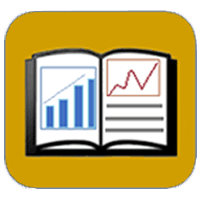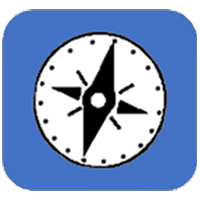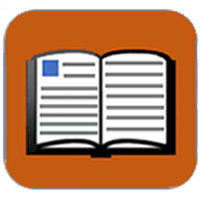Invasive Species
View synthesis.
Invasive Species in Forests and Rangelands of the United States is a sector-wide scientific assessment of the current state of invasive species science and research in the United States. Leading experts on invasive pests, climate change, social sciences, and forest and rangeland management contributed to highlighting the science and identifying knowledge gaps on a diverse array of topics related to invasive species. Stakeholders from nongovernmental organizations, academic institutions, professional organizations, private corporations, and state and federal agencies representing public, private, and tribal interests also provided input to the assessment. Input from these stakeholders helped to frame the subject matter content and management options presented in this report, ensuring relevance for decision-makers and resource managers.
Webinar recording.
The following topics and presenters are included:
Cheatgrass Impacts and Management Options in Western U.S. Ecosystems, presented by Ali Urza and Brice Hanberry
Impacts of Invasive Cogongrass on Private and Public land: Prevention and Control Strategies, presented by Rima Lucardi
Ventenata Invasion in the Western U.S.: Using Remote Sensing & Model Output to Understand Invasion Risk, presented by Becky K. Kerns
We are hosting several workshops, symposia as part of the 2021 Society for Range Management annual meeting. **You do not need to be registered for the SRM meeting to attend.
Strategic Targeted Grazing to Reduce Fine Fuels (Feb 16, 1:30-4:00 PST/2:30-5:00 MST)
The Strategic Grazing symposium was held in conjunction with the Society for Range Management Virtual Meeting. It provides updates on the Idaho and Nevada strategic grazing demonstration areas. Symposium recording.
Sagebrush Ecosystem Recovery 10+ Yrs after Treatments (Feb 17, 1:30-3:30 PST/2:30-4:30 MST)
The Sagebrush Ecosystem symposium provides Sagebrush Steppe Treatment Evaluation Project (SageSTEP) updates. It was held in conjunction with the Society for Range Management Virtual Meeting. It shares what’s been learned after at least 10 years post-treatment. Symposium recording.
Big Sagebrush Restoration Status (Feb 18, 1:30-4:00 PST/2:30-5:00 MST)
The Big Sagebrush symposium was held in conjunction with the Society for Range Management Virtual Meeting. It was brought to you by the Rangeland Equipment and Technology Council (RTEC). Symposium recording.
The Sagebrush Ecosystem Recovery symposium will provide Sagebrush Steppe Treatment Evaluation Project (SageSTEP) updates. It will be held in conjunction with the Society for Range Management Virtual Meeting. It will share what’s been learned after at least 10 years post-treatment. **You do not need to be registered for the SRM meeting to join.
View abstracts.
Abstracts of Recent Papers on Range Management in the West. Prepared by Charlie Clements, Rangeland Scientist, USDA Agricultural Research Service, Reno, NV.
Webinar recording.
Disturbance events, such as overgrazing and the catastrophic fires, in our shrub steppe landscape can kick-start a negative feedback loop with invasion of noxious weeds. These invasive species can have a direct effect on services and ecological benefits provided by the shrug steppe landscape. Learn what we can do to minimize the spread of invasive plant species and how native seeds and grasses can be used to restore this brittle system.
Invasive annual grasses threaten millions of acres of sagebrush rangelands across the west. This two day workshop hosted by the Harney County Wildfire Collaborative and Oregon SageCon Partnership will explore the barriers and opportunities for addressing invasive annual grasses in Oregon and beyond the state. In this workshop some of the most pressing issues related to invasive annual grass management will be discussed, including the connection between invasive annual grasses and wildfire and what can be done to better address this threat.
VIRTUAL Workshop Dates & Agenda
Monday, December 14, 12:30-4:30pm: Defend the Core—Keeping the Good, Good
- Hard truths of invasive annual grasses
- Stopping the Spread
- Supersizing Suppression Success
- Reducing Wildfire Risk
- Ratcheting Up Resiliency
Tuesday, December 15, 8:30am-12:30pm: Grow the Core—Restoring At-Risk and Converted Lands
- Managing Invasive Annual Grasses
- Innovative Restoration
- Prioritizing Limited Resources & Sustaining Long-term Investment
- Where Do We Go From Here
View the document.
The toolkit is comprised of three elements:
- A roadmap for invasive grass management in the West, with new best management practices for the identification, protection, and expansion of “core” areas – regions with relatively low, or no, annual grass invasion;
- Case studies highlighting the application of these practices in Idaho and Wyoming; and
- A new geospatial data layer (which uses analytical tools to compile existing federal data) to help state and local managers assess invasive annual grasses within their jurisdictions, while also offering opportunities to identify new cross-boundary collaborative projects.
View report.
This Gap Report Update is the latest addition to the list of valuable products of the Working Group designed to help identify the challenges (gaps) and offer ideas to address those challenges. The Gap Report Update has something for every level, public and private, to consider helping address the fire and invasive threat. It is our hope that the leaders of the various state and federal agencies will review the recommendations in the report and determine if there are things they can affect directly to address the gaps. It took a multi-agency, multi-discipline Working Group to identify the problems and provide possible solutions to these conservation and management challenges, it will certainly take a broad-based coalition of agencies, and public and private groups working together to ensure a healthy Sagebrush Biome is available for generations to come.
View Part 1 (2:12) and Part II (2:08) recordings of this symposium.
This special half-day webinar symposium provides an in-depth review of three invasive grasses (cheatgrass, medusahead, ventenata) in the Western US.







